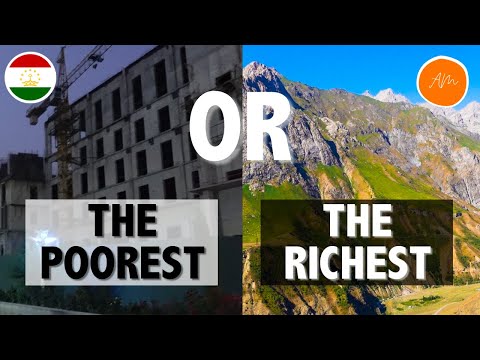
Tajikistan, nestled amidst the majestic Pamir Mountains in Central Asia, holds a unique distinction as the poorest country in the region. Despite its economic challenges, this landlocked nation offers an array of rich cultural experiences and breathtaking natural landscapes. In this article, we explore Tajikistan’s economic landscape and take a closer look at its capital city, Dushanbe, as a travel destination.
#### Economic Landscape of Tajikistan
Tajikistan’s economy is primarily dependent on remittances from migrant workers abroad, particularly in Russia. This source of income constitutes a significant percentage of the nation’s GDP. Agriculture also plays a vital role but is hampered by limited arable land and outdated infrastructure. The country struggles with high rates of unemployment and poverty, with a substantial portion of its population living below the poverty line.
Despite these challenges, Tajikistan has been striving to improve its economic stability. Efforts to enhance infrastructure and encourage investment are slowly progressing with international assistance from organizations like the World Bank and Asian Development Bank.
#### Dushanbe: The Heart of Tajik Culture
Dushanbe, meaning “Monday” in Tajik, traces its humble beginnings to a small village that hosted a popular market every Monday. It has since evolved into the bustling capital city of Tajikistan. Dushanbe is not only the political and economic center but also a hub for culture and history in Tajikistan.
##### Attractions in Dushanbe:
1. **National Museum of Tajikistan**: This museum houses artifacts from across the country’s rich history, including Buddhist statues, Islamic manuscripts, and contemporary works.
2. **Hissor Fortress**: Located just outside Dushanbe, this historical site dates back over 3,000 years and gives insights into the region’s ancient history.
3. **Rudaki Park**: Named after the Persian poet Rudaki, considered by many to be the father of Persian poetry, this central park is perfect for leisurely strolls and experiencing local life.
4. **Dushanbe Flagpole**: One of the world’s tallest free-standing flagpoles creates an imposing sight against Dushanbe’s skyline.
##### Cultural Experience:
Dushanbe offers visitors an authentic glimpse into traditional Tajik culture through music performances featuring traditional instruments like dombra (a stringed instrument) or attending a lively session of Shashmaqam music – recognized by UNESCO for its cultural significance.
##### Culinary Delights:
The local cuisine reflects influences from various regions along the Silk Road. A must-try dish is Plov (also known as Osh), which features rice cooked with carrots, onions, meat (usually beef or lamb), often garnished with quail eggs or raisins.
#### Travel Practicalities
Traveling to Dushanbe involves navigating some logistical challenges due to limited direct flights from major international cities. Visitors typically connect through Istanbul or Moscow. Visa regulations have relaxed recently allowing easier access for tourists from many countries.
While traveling within Dushanbe is relatively convenient thanks to buses and taxis; however, experiencing more remote regions requires sturdy vehicles suitable for rugged terrains typical in mountainous areas.
#### Conclusion
While it may be true that Tajikistan faces significant economic hardships as Central Asia’s poorest country; however this should not deter travelers seeking unique cultural experiences away from conventional tourist paths. Dushanbe exemplifies resilience amidst hardship through its vibrant cultural scene set against striking natural beauty — affirming that even less economically prosperous nations have much to offer on global tourism landscapes.
